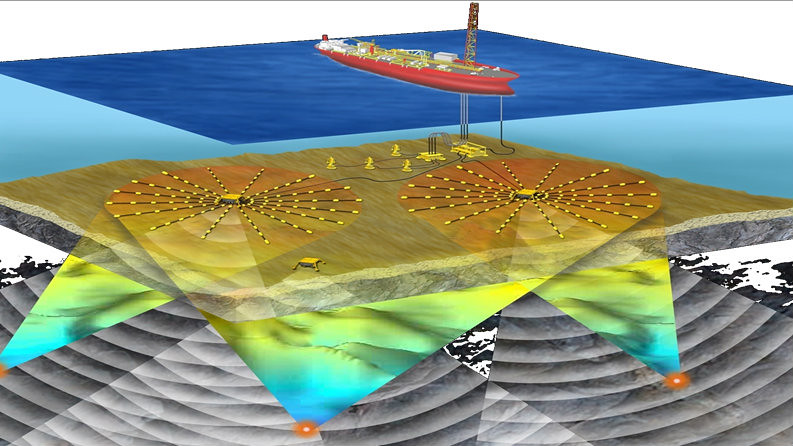Conventional seismic imaging transmits sound energy into the ground and builds a picture of the underlying geology by analysing how the energy waves are reflected back to the receiver.
In contrast, a new technology called Acoustic Zoom, developed by University of Bath alumnus Professor Jaques Guigné in collaboration with his former PhD supervisor Professor Nick Pace, suppresses the reflected energy signal and instead records how the sound energy is scattered; data that is normally discarded but still holds important information.
This scattered sound data is used to create a highly detailed map of the underground geology, enabling subtle details such as fissures and fractures in the strata to be seen that can’t be detected using traditional seismic surveying.
Conventional seismic techniques create a series of loud bangs that can disturb marine wildlife, affecting their behaviour and migration habits. The University of Bath is already active in monitoring and reducing these impacts.
The Acoustic Zoom technology goes further by reducing the original energy, using a ‘marine trombone’ that can be adjusted to release smaller levels of energy at much higher frequencies, which reduces the effects on underwater animals.
Professor Guigné explained: “We’re really excited about this technology because it allows us to take virtual core samples, giving us a much more detailed understanding of subtle geological features, without any drilling.
“It works by analysing the scattered sound energy rather than the reflected energy that is normally recorded. The scattered signal is a lot weaker so it’s been quite tricky to do successfully.
“It’s a bit like driving at night trying to focus on the face of the driver of an oncoming car through the glare of their headlights.
“Acoustic Zoom is also gentler on the environment because it releases smaller amounts of energy over a longer time and at higher frequencies, so although marine life can still hear the sound waves, they are much less intrusive.
“We hope this new technology will help avoid unnecessary exploratory drilling by the oil industry and also reduce the impact of underwater surveys on the environment.”
Professor Guigné completed his PhD at Bath in 1986 and went on to set up his own seismic company in Canada. He has continued his research as a Visiting Professor at Bath for the last decade. His development of Acoustic Zoom was part of his Doctor of Science degree at Bath, awarded in June 2014.
He added: “Working with colleagues at the University of Bath has given me the opportunity to really think outside the box and start from first principles in trying to rethink how we do seismic surveys.
“The fact I am still collaborating with my former PhD supervisor, nearly 30 years after my graduation is testament to how well we work together and how much I love working with the University.”
Guigné et al (2014) “Acoustic zoom high-resolution seismic beamforming for imaging specular and non-specular energy of deep oil and gas bearing geological formations” is published in Journal of Natural Gas Science and Engineering.

